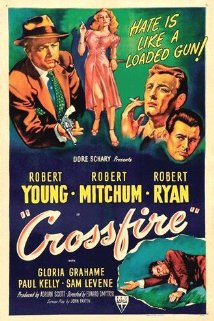 Last Friday was my birthday and I have been having much fun celebrating. As a result, the Film Noir File has just one entry!
Last Friday was my birthday and I have been having much fun celebrating. As a result, the Film Noir File has just one entry!
Tuesday, Sept. 23, 12:15 a.m. (9:15 p.m.) on TCM:
“Crossfire” (1947, Edward Dmytryk). Based on the novel “The Brisk Foxhole” by the young Richard Brooks and directed by Edward Dmytryk in what many feel was the best period of his career, this is the famous postwar thriller about an anti-Semitic murder and the returning American soldiers mixed up in it. Co-starring Robert Mitchum, Robert Ryan, Robert Young, Sam Levene and Gloria Grahame.
The film is moody and gripping, filled with noirish dark-hued scenes, and the entire cast is excellent. But the performance everyone tends to remember best is Bob Ryan as the anti-Jewish soldier – a role that Ryan packs with seething, psychopathic hatred and rage. Incidentally, in Brooks’ original novel, the murder victim was not Jewish, but homosexual.






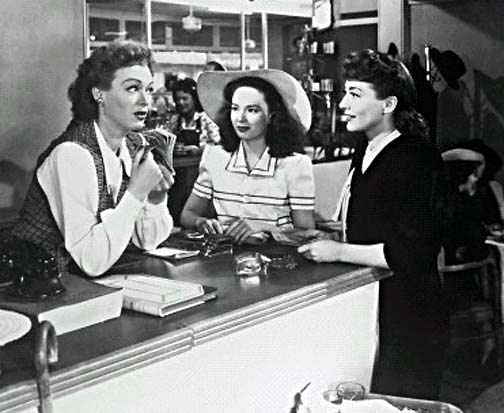






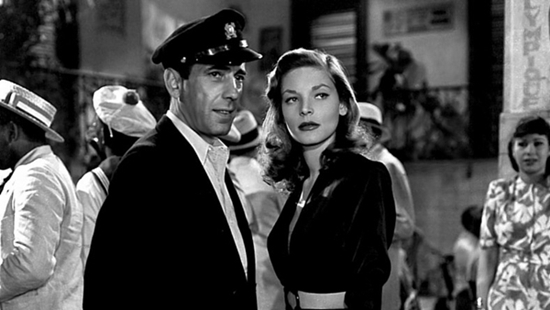
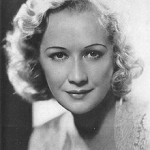
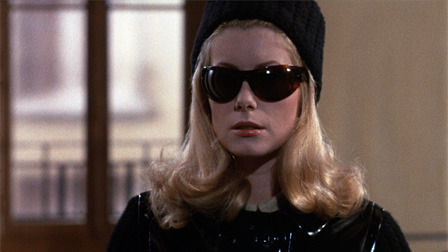


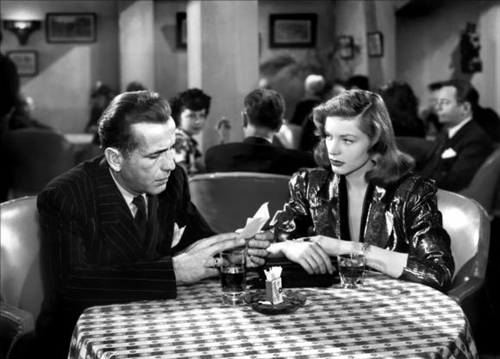

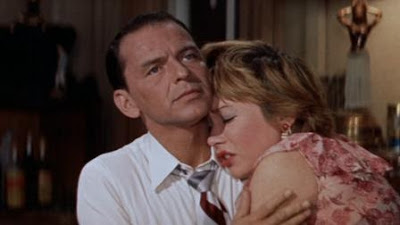
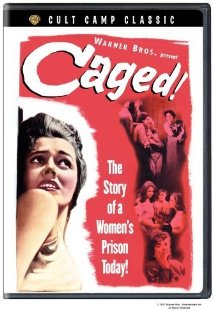
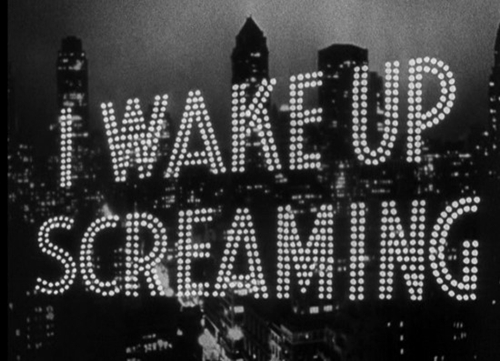
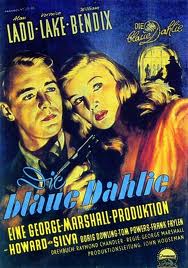






From FNB readers